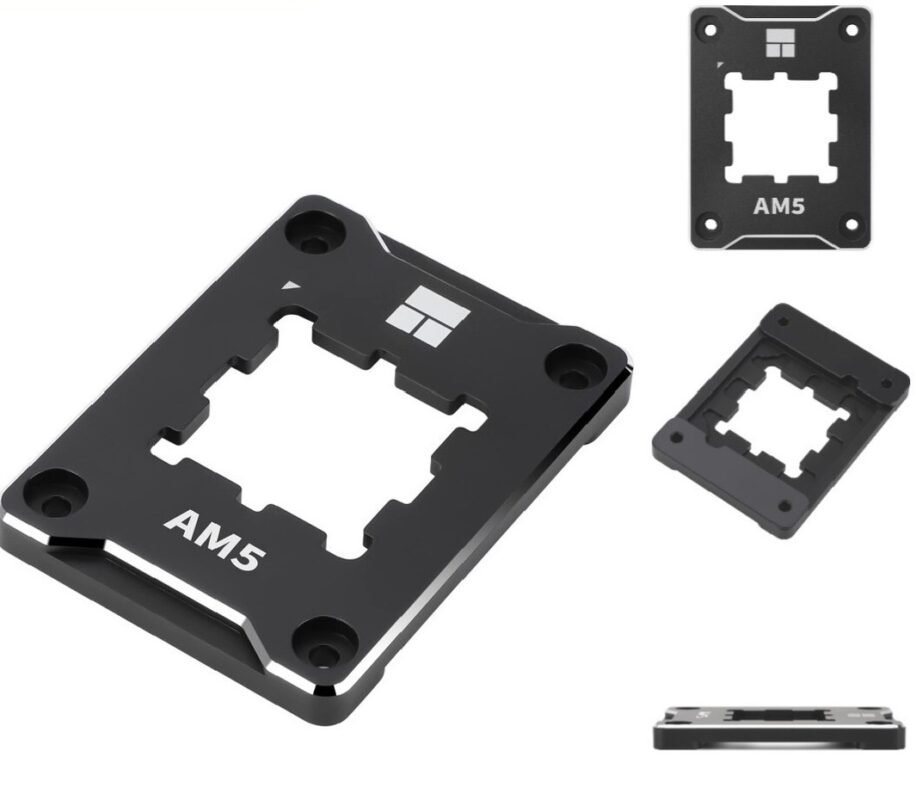THERMALRIGTH
THERMALRIGTH AM5 CPU Contact Frame V2
د.ج 1.900,00Thermalright AM5 CPU Contact Frame V2C: Optimizing Cooler Contact
The Thermalright AM5 CPU Contact Frame V2C is an aftermarket accessory designed specifically for AMD Ryzen 7000 series (and newer) processors that use the AM5 socket. Its primary purpose is to replace the motherboard’s stock CPU retention mechanism (ILM – Independent Loading Mechanism).
Key Features and Purpose:
- Prevents CPU Bending: The stock AM5 ILM can sometimes exert uneven pressure on the CPU’s Integrated Heat Spreader (IHS), potentially causing it to slightly bend or bow over time. This frame provides uniform pressure around the edges of the CPU.
- Improves Cooler Contact: By preventing the IHS from bending, the contact frame ensures a flatter surface. This allows the base plate of the CPU cooler (air cooler or water block) to make more complete and even contact with the CPU IHS.
- Enhanced Thermal Performance: Better contact between the CPU and the cooler leads to more efficient heat transfer. Users often report a reduction in CPU temperatures (typically by a few degrees Celsius, though results vary) after installing a contact frame.
- Secure Mounting: It utilizes the existing motherboard backplate screw holes for a secure installation, providing a stable platform for the CPU.
- Material & Design: Usually precision-machined from aluminum alloy (CNC) to ensure a perfect fit and even pressure distribution. The “V2C” likely denotes a specific revision or version from Thermalright, possibly with minor design tweaks compared to earlier iterations, but serving the same core function.
In summary, the Thermalright AM5 Contact Frame V2C is a popular upgrade for PC enthusiasts and builders using AM5 CPUs who want to ensure optimal contact between their CPU and cooler, potentially improving thermal performance and preventing long-term IHS bending. Installation requires removing the stock retention mechanism.
Online store of household appliances and electronics
Then the question arises: where’s the content? Not there yet? That’s not so bad, there’s dummy copy to the rescue. But worse, what if the fish doesn’t fit in the can, the foot’s to big for the boot? Or to small? To short sentences, to many headings, images too large for the proposed design, or too small, or they fit in but it looks iffy for reasons.
A client that’s unhappy for a reason is a problem, a client that’s unhappy though he or her can’t quite put a finger on it is worse. Chances are there wasn’t collaboration, communication, and checkpoints, there wasn’t a process agreed upon or specified with the granularity required. It’s content strategy gone awry right from the start. If that’s what you think how bout the other way around? How can you evaluate content without design? No typography, no colors, no layout, no styles, all those things that convey the important signals that go beyond the mere textual, hierarchies of information, weight, emphasis, oblique stresses, priorities, all those subtle cues that also have visual and emotional appeal to the reader.









